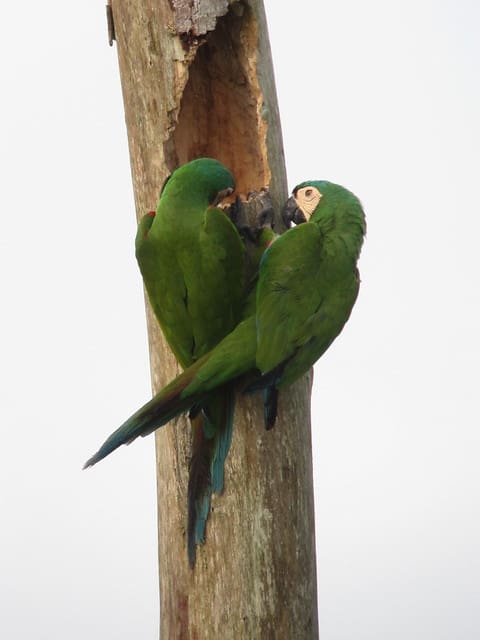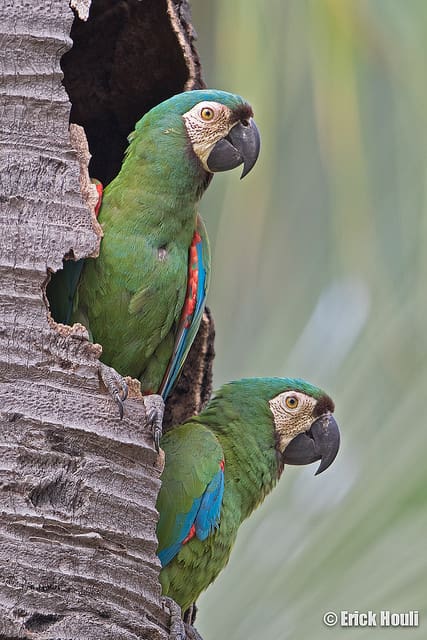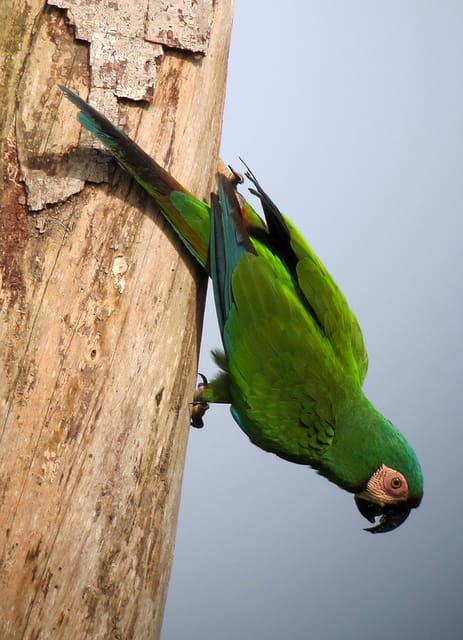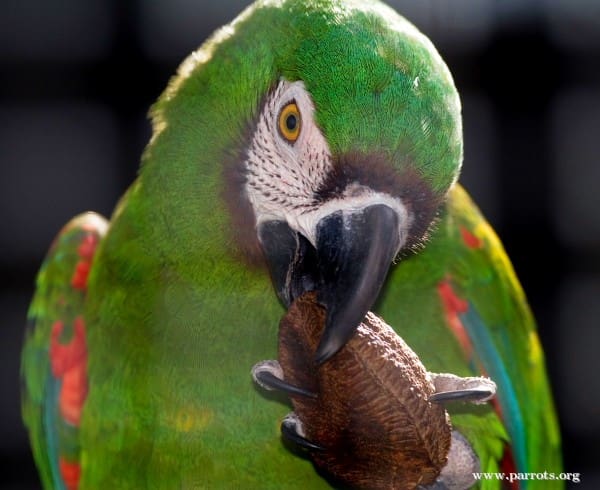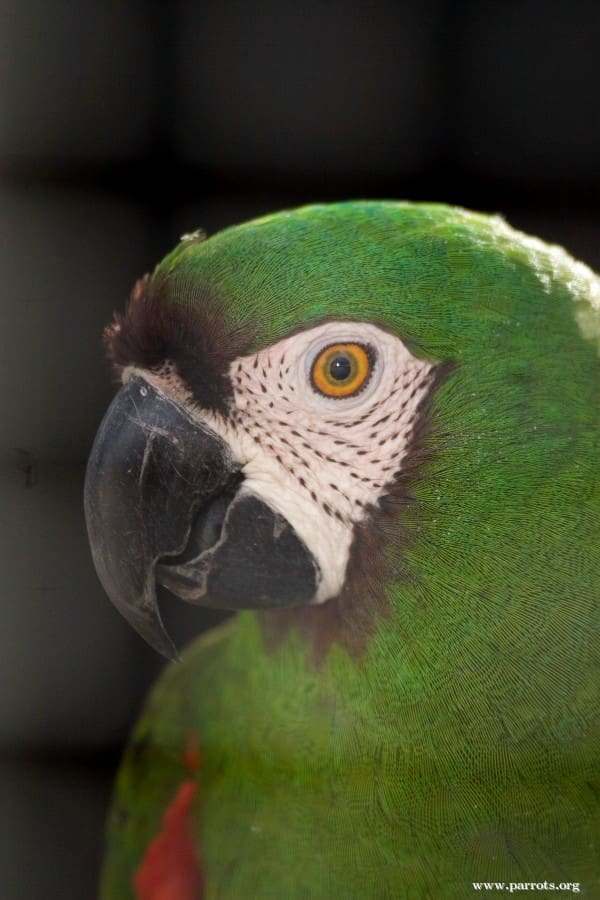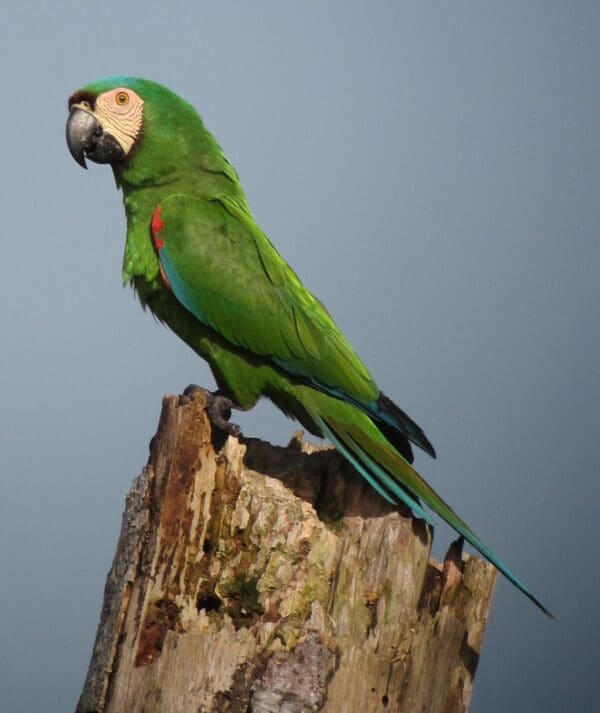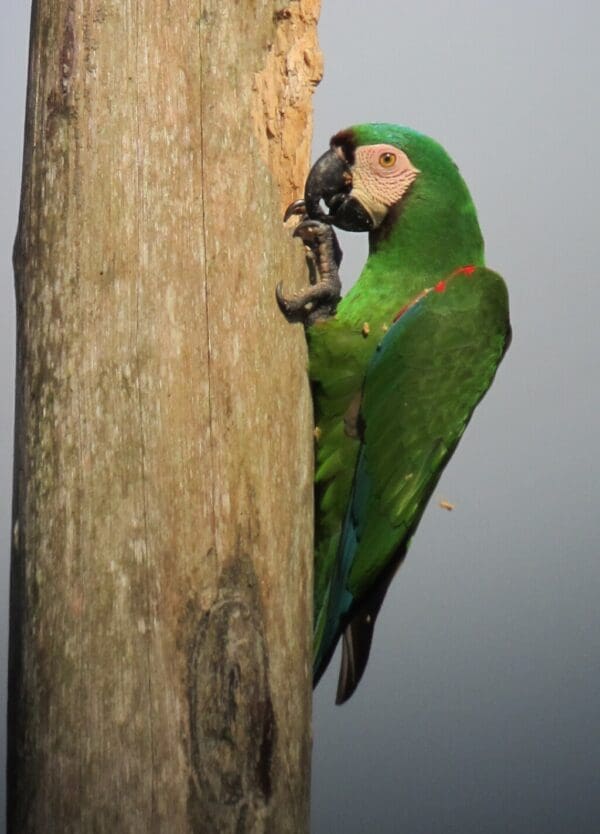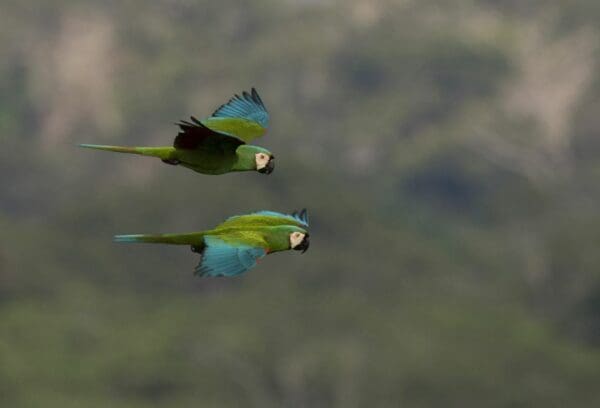Chestnut-fronted Macaw
Also known as:
Severe Macaw, Brazilian Green Macaw
Also known as:
Severe Macaw, Brazilian Green Macaw
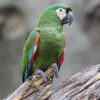
![© Felix Uribe [CC BY-SA 2.0] via Flickr Wild Chestnut-fronted Macaws cling to a tree with a cavity](https://parrots.org/wp-content/uploads/2023/01/wpt_Chestnut-fronted-Macaw_1144-19-100x100.jpg)
![© Erick Houli [CC BY-SA 2.0] via Flickr Wild Chestnut-fronted Macaws perch at a nest cavity](https://parrots.org/wp-content/uploads/2023/01/wpt_Chestnut-fronted-Macaw_1144-18-100x100.jpg)
![© Felix Uribe [CC BY-SA 2.0] via Flickr A wild Chestnut-fronted Macaw clings to a tree trunk](https://parrots.org/wp-content/uploads/2023/01/wpt_Chestnut-fronted-Macaw_1144-16-100x100.jpg)
![© anthrotect (originally posted to Flickr as [1]) [CC BY 2.0] via Wikimedia Commons A wild Chestnut-fronted Macaw perches on a branch](https://parrots.org/wp-content/uploads/2023/01/wpt_Chestnut-fronted-Macaw_1144-11-100x100.jpg)
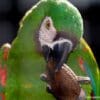
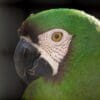
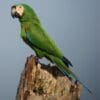
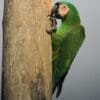

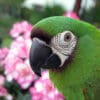
DID YOU KNOW?
The Severe Macaw is one of a group known as “mini macaws.”

Ara

severus
Size:
40-49 cm (15.6-19 in)
Weight:
307-387 g (10.7-13.5 oz)
Subspecies including nominate:
one
Colour Adult:
Both adults small green macaws with long tail, blue suffusion on crown, forehead, chin, and area around cheeks near bare face chestnut brown, bend of wing, wrist area, and lesser wing coverts red; underwings at flight feathers dark orange/red, tail red/brown tipped blue. Beak grey/black. Eye yellow. Face bare with fine lines of black feathers.
Colour Juvenile:
As in adults but with shorter tail and grey eye.
Call:
Loud; calls include harsh screeches reminicent of braying donkey. Calls when at rest resemble Blue-and-yellow Macaw (Ara ararauna). High-pitched notes in flight.
More Information:
Content Sources:
Wikipedia
CITES
BirdLife International
Cornell Lab of Ornithology/Birds of the World
A Guide to Parrots of the World, Juniper and Parr, 1998
Parrots of the World, Forshaw and Cooper, 1989. 2010 edition
Parrots of the World, Forshaw, 2006.
Parrots in Aviculture, Low, 1992.
Psittacine Aviculture, Schubot, Clubb and Clubb, 1992.
Captive Status:
Uncommon accept US; limited breeding but increasing.
Longevity:
30+ yrs
Housing:
Aviary or suspended enclosure minimum length 4 m (13 ft), or 3 m (9.8 ft) with access to larger flight for part of the year.
Diet:
Cooked beans, boiled corn, sunflower seed – dry, soaked or sprouted; fruit, especially apple, orange, banana; hand-rearing food with hard-boiled egg and carrot ground to crumbly consistency; fresh vegetables such as: carrot, celery, zucchini, peppers, peas in the pod, beans, corn; spray millet, complete kibble for macaws.
Enrichment:
Likes ropes to swing on, lots of bird-safe chewables (fir, other bird safe woods, vegetable tanned leather), bathing.
Nest Box Size:
12″ x 12″ x 24″ (30.5 cm x 30.5 cm x 61 cm) vertical box.
Clutch Size:
2 to 3
Fledging Age:
12 weeks
Hatch Weight:
—
Peak Weight:
—
Weaning Weight:
—
World Population:
Unknown but described as fairly common. Decreasing.
IUCN Red List Status:
Least Concern
CITES Listing:
Appendix II
Threat Summary:
This species is suspected to lose 19.2-31.5% of suitable habitat within its distribution over three generations. However, because of the species’ tolerance of fragmentation/degradation/edge effects, it is suspected to decline <25% over three generations.
Range:
E Panama, Pacific slope of Andes in W Colombia to S Ecuador, and east of Andes from Colombia, E Ecuador and E Peru to Santa Cruz, E Bolivia; north of Amazon river east to W and S Venezuela and Guianas, and south of Amazon river east to Mato Grosso, south-central Brazil. Introduced to S Florida, US.
Habitat:
Up to 1500 m (4920 ft). Found in partly cleared and secondary forest, forest edge and open country with trees, humid lowland forest, varzea, swamp forest, palm groves, gallery forest and savanna. Avoids continuous terra firme forest.
Wild Diet:
Diet includes seeds of Sclerolobium albiflorum, Sapium aereum, Cedrela odorata, Cupania cinerea, pulp of Hyeronima and Ficus, pulp and seeds of Inga laterifolia, Micropholus melinoneana, Euterpe precatoria, Citharexylum poeppigii and Gulielma, fruit of Hura crepitans, Feuillea, Cecropia and Cariniana, leaves of Cecropia miparia and Sterculia excelsa, flowers of Quararibea cordata, Virola surinamensis and Erythrina amazonica, bark of Ceiba pentandra.
Ecology and Behaviour:
Are quiet in the canopy and hard to spot; roost communally. Usually in pairs or small flocks otherwise.
Clutch and Egg Size:
2 to 3 eggs, 38.5 x 30.5 mm (1.5 x 1.2 in)
Breeding Season:
March-May, Colombia. February-March, Panama. September-December, Surinam.
Related Links:
—

